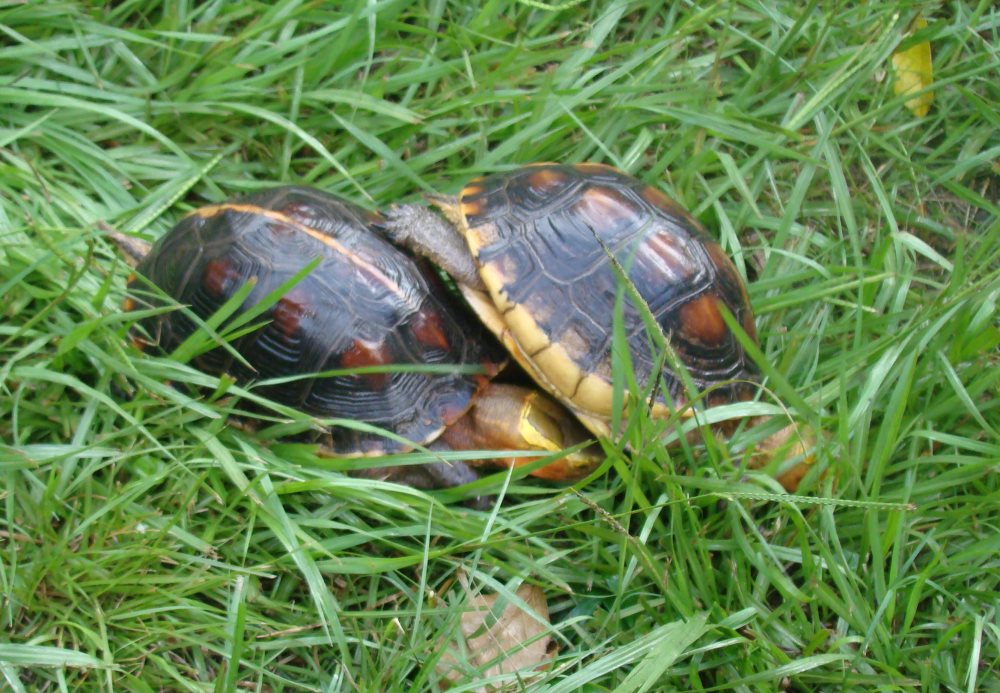
Note the yellow temporal line on this adult Chinese Box Turtle
At this point in time it has become difficult and quite expensive for hobbyists to acquire Asian herps, turtles included. Even prior to importation difficulties, hatchlings of several turtle species in the genera
Cuora and
Cistoclemmys were being priced by breeders in the many hundreds and even thousands of dollars each. Today (2024) the prices of many taxa are even higher.
Fortunately though, a few of the species that can still be imported and/or that are easily bred remain almost affordable. One of these, long a favorite of hobbyists (me included) is
Cuora flavomarginata and is known to most as the Chinese Box Turtle. The 3 subspecies are divided between China mainland, Taiwan, and Japan. The subspecies, all remarkably similar in external appearances, are
C.f. flavomarginata from Taiwan,
C.f. sinensis from southern mainland China and
C. f. evelynae from Japan.
Like the American Box Turtles its carapace is highly domed and the turtle has a very functional plastral hinge. The carapace may vary in color from dirty olive to black, with the latter being the more common. There is a yellowish vertebral stripe and the marginal scutes are a combination of dark and light pigment. The skin atop the head and on the limbs and tail is a dark charcoal, occasionally with pale olive overtones, The crown is separated from the pinkish cheeks by a prominent yellow bar on each side. All colors are at their brightest when the turtle is in breeding condition. Both males and females attain a straight measure of 5” (rarely to 6”).The external differences between male and female
C. flavomarginata are slight. Males have a broader (but not much longer) tail than females. When extended the male’s tail is almost triangular in shape.
Like many terrestrial turtle species, the Chinese Box Turtle is omnivorous. Moistened tortoise diet, canned pet food, fresh succulent fruit, insects and worms are all accepted eagerly by most captives.
Summarizing, the common name given this turtle is quite descriptive, although not brightly colored they are pretty, personable, longlived, and proving that they are easily kept, some of mine have been captive for 40+ years.
Courtship is rough, breeding is rougher. Chinese Box Turtles

This is a hatchling Chinese Box Turtle. With growth the carapace will become more highly domed.




